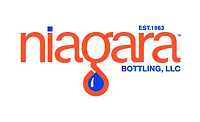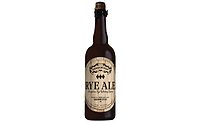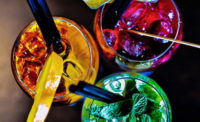In the beverage market, as well as other consumable industries, the influence of clean label continues to expand its reach. In fact, in its Top Ten Trends list for 2017, the Netherlands-based Innova Market Insights highlighted how clean label has been a running theme for the market research firm dating back to 2008. However, it adds that the macro trend took on a more dominant role in the latest prognostication as clean and clear became a theme throughout the entire list.
Additionally, Innova listed its top trend as Clean Supreme, highlighting the rewritten rules of clean and clear labeling. “The demand for total transparency now incorporates the entire supply chain, as a clean label positioning becomes more holistic,” it stated in November 2016 press release.
Gary Hemphill, managing director of research for Beverage Marketing Corporation (BMC), New York, notes the impact clean label has had on the beverage market. “There’s been an increasing emphasis on beverages with a handful of natural, simple ingredients, which is a result of the overall health-and-wellness trend,” he says.
Hemphill adds that beverage-makers are taking cues about which ingredients to use based on the need states of consumers. “The key word is value,” he says. “If ingredients add value and there is consumer demand for them, beverage manufacturers will use them.”
Andrew Mandzy, director of strategic insights of health and wellness for New York-based Nielsen, highlights the increasing number of consumers who are reading nutrition labels and the product attributes that they are seeking.
“In Nielsen’s Global Ingredient study, 73 percent of consumers stated that they feel more positively about companies that are transparent about where their products are made, grown or raised, and 69 per-cent of consumers stated that they are willing to pay more for foods and beverages that do not contain undesirable ingredients,” he says. “This has led to the growth of clean-label products across the store, and clean-label sales have increased in beverages as well. Beverages in general have grown 1.9 percent compared to last year, but in a category like new age beverages, clean-label sales have grown 10.4 percent compared to last year. In ready-to-drink coffee, clean-label sales are growing 19.5 percent compared to last year.
“Even more interesting than that is that 53 percent of consumers say that the exclusion of undesirable ingredients is more important than the inclusion of beneficial ones,” he continues. “We have seen that trend manifest itself in beverages as well, as beverages that have antioxidants and are free from artificial sweeteners are up 3.3 percent, while beverages with antioxidants that are calorie free, and likely contain artificial sweeteners, are down 3.1 percent. While having survey data points helps triangulate consumer sentiment around ingre-dients, there is no better way to confirm this trend than by looking at market data.”
As more and more consumers read labels, ingredients are becoming more scrutinized. As a result, a broader focus is taking hold when consumers are making purchase decisions.
“The focus on clean label and transparency has resulted in a broader focus on ingredients and functionality,” Mandzy says. “The sales of beverages that contain probiotics have grown 78.1 percent compared to a year ago. And marketers are also jumping on this trend by making claims on pack around probiotics. Sales of products that are making probiotic claims are up 104 percent compared to last year, which shows that more effort is being made by manufacturers to not only have probiotics in the formulation, but to promote it on pack.”
Where to look
Although clean label is not limited to specific categories, analysts note that some beverage categories nicely align with this trending attribute.
“Beverages with natural roots like tea, coffee, fruit beverages and bottled water will have an easier time delivering on clean-label trends than other categories,” BMC’s Hemphill says.
Many brands also have built campaigns around clean label and transparency trends. Among those is Bethesda, Md.-based Honest Tea Inc., a division of The Coca-Cola Co. This year, Honest Tea highlighted transparency through its hashtag #RefreshinglyHonest campaign.
The hashtag #RefreshinglyHonest Project is a fresh take on the brand’s annual National Honesty Index. The campaign invited consumers to realize everyone else is “just like us” — perfectly imperfect, the company says.
Participants visiting Honest Tea’s pop-ups were able to submit a #RefreshinglyHonest moment as currency in exchange for a bottle of Honest Tea. For each moment submitted at the pop-ups or on social media, Honest Tea donated $1 to VisionSpring, an organization that provides vision screenings and eye glasses to underserved communities worldwide.
“At Honest Tea, we believe in celebrating honesty, both in the ingredients we put into our bottles and how we live our everyday lives,” said Ami Mathur, general manager and head of marketing at Honest Tea, in a statement. “We’ve taken this message to the next level this year through the #RefreshinglyHonest Project to further encourage people to take this journey with us.”
Nielsen’s Mandzy also highlights how the ready-to-drink coffee segment has been impacted by clean label. “The ready-to-drink coffee category is taking full of advantage of the consumer clean label trends,” he says. “Overall, that category is up 21 percent compared to last year, which shows that its growth is strong. And, in the category, 89 percent of the sales in the category come from products that are free from artificial ingredients. In addition, 60 percent of category sales are made with simple ingredients, and those products have grown 36 percent compared to last year.”
Regardless of the beverage category, Mandzy expects clean label will continue to permeate the beverage market. “Clean label shows no signs of slowing down in food and beverage,” he says. “As retailers continue their focus on clean label and transparency as part of their broader growth strategies, expect continued growth among the existing consumer bases, as well as new consumers that are currently under-indexing on clean label, like older consumers and lower income households. Look for beverages to also capitalize on the consumer need for functionality in their foods and beverages. While consumers will seek to exclude undesirable ingredients from their foods and beverages, adding in functional benefits will help with their overall health-and-wellness goals.” BI






